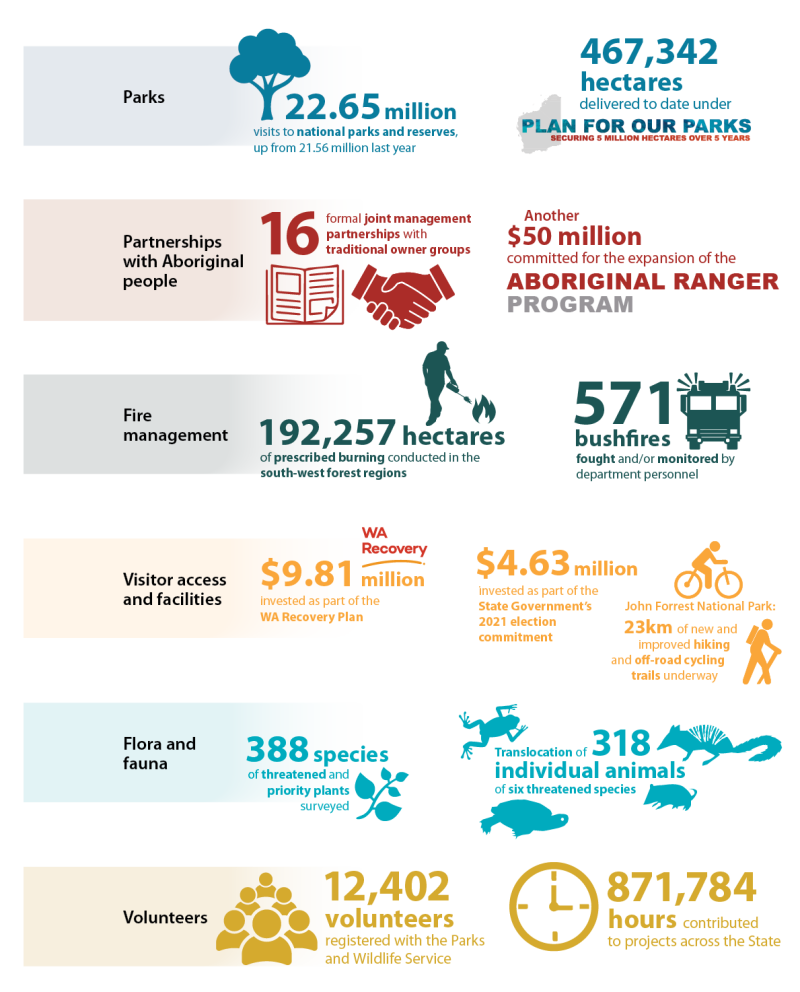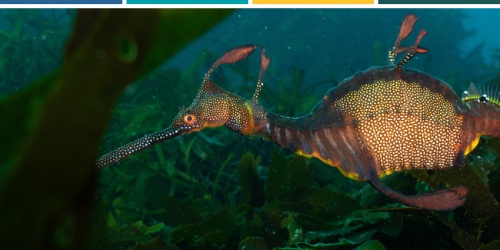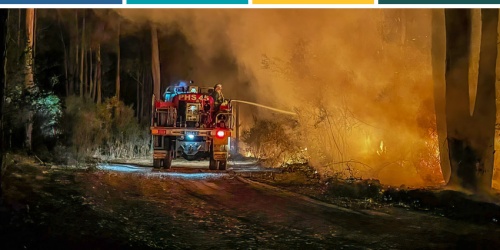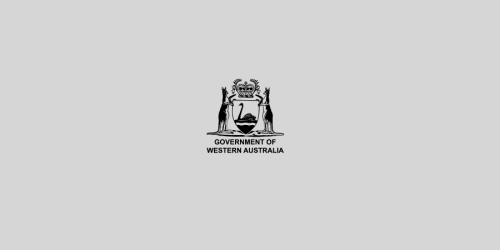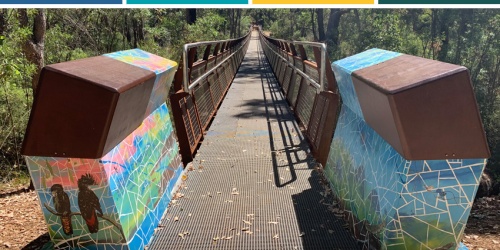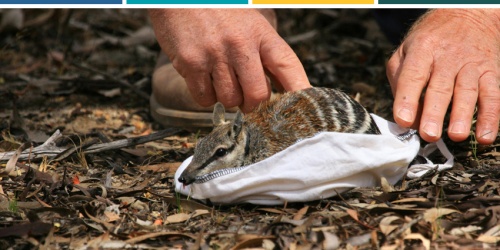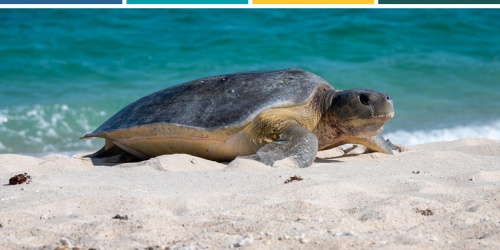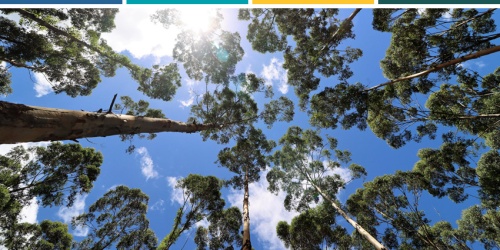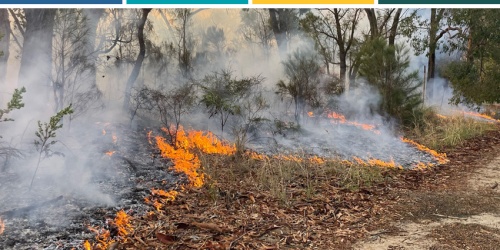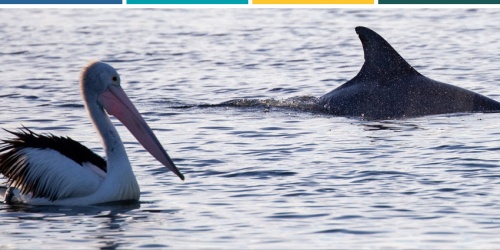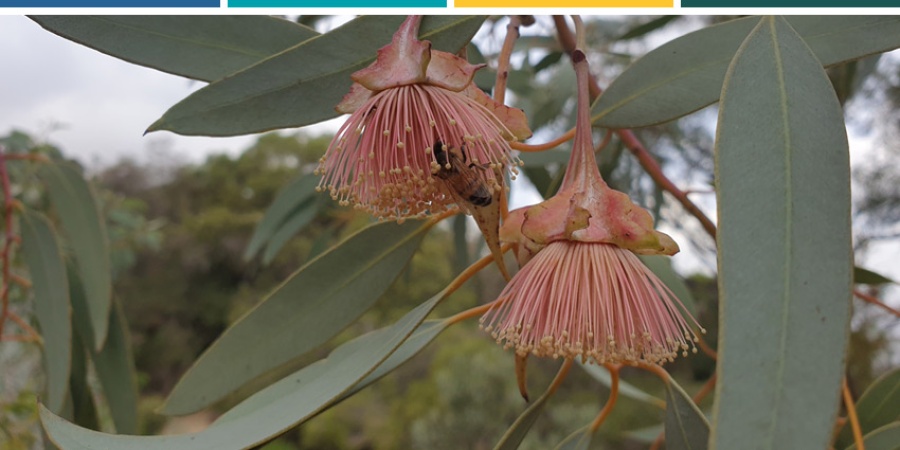
Eucalyptus alatissima. Photo - Karla Forrest
We are committed to implementing the State Government’s vision for the department by providing inspiring visitor experiences in nature-based tourism and using consolidated biodiversity knowledge and conservation science to deliver evidence-based conservation and decision-making for the land and water we manage. As a leading evidence-based agency we are proud to host the Biodiversity Information Office, which built the State’s new biodiversity data sharing platform, Dandjoo, during the year. This new approach to biodiversity data management facilitates shared data for industry, government, researchers and the community.
The department’s continuous improvement also included a review of our capabilities as part of the Public Sector Commission’s Agency Capability Review Program. Our review, led by Professor Margaret Seares AO, commenced in October 2021 and provided the opportunity for employees to contribute through a survey and workshops and we are now awaiting the final report. This will provide us with a clear understanding of our current capabilities, including both strengths and areas for improvement. Thank you to the Public Sector Commission leadership team for their support during this process.
During the year, more than 300 employees from across the department and statutory authorities helped inform the department’s Strategic Directions 2022–25, which will guide our work over the next three years. The Strategic Directions capture our employees’ insights and passion for ensuring biodiversity and natural places are valued by the community and conserved for the future. Whether that be through their work delivering education programs in schools, leading tours of Kings Park, caring for animals at Perth Zoo, safeguarding our estates, conducting research and science or welcoming visitors to Wadjemup (Rottnest Island), collectively, as we move forward, our shared purpose is to inspire, conserve, discover and protect.
Reflecting on the past 12 months, I feel a great sense of pride and gratitude for our employees and volunteers. Not only have they continued to demonstrate adaptability and resilience in the face of COVID-19 and the subsequent roll-out of the WA Recovery Plan, these qualities also came to the fore during the 2021–22 bushfire season, when for the first time in recorded history, Western Australia experienced four concurrent Level 3 incidents.
In addition to our frontline employees, people in support roles across the State ensured firefighters were fed, accommodated and paid, that the community was kept safe and informed, and resources were procured. Together, they worked long hours in challenging conditions to protect Western Australian communities and I cannot thank them enough.
It is a testament to the skill, professionalism and dedication of employees that we achieved approximately 192,257 hectares of prescribed burning in the south-west forest regions. This helped to significantly reduce the threat and severity of bushfires, minimising the risk to life, infrastructure and biodiversity values, by reducing the build-up of flammable vegetation and ground fuels.
As part of ongoing research that looks at the impact of fire on bushland management for fire risk, native species conservation and weed control, an experimental burn was also conducted in Kings Park. It was the first implementation of short fire interval treatments in the study and will be followed up with further monitoring.
The Plan for Our Parks initiative now encompasses 467,342 hectares, representing good progress towards our five-million-hectare target. Wellington National Park was expanded by 7,378 hectares and new parks include Thundelarra Conservation Park in the Midwest Region within Badimia country and Warlibirri National Park, which covers areas of the Margaret River east of Fitzroy Crossing in the Kimberley. Along with the Department of Primary Industries and Regional Development, the department also began extensive public consultation for a proposed marine park on the south coast and for the review and expansion of Marmion Marine Park.
Western Australians continue to visit national parks and reserves in high numbers – with 22.65 million visits in 2021–22, up from 21.56 million in 2020–21. Most regions saw increased visitation, with the department’s Pilbara and Wheatbelt regions experiencing the largest proportional increases. This also translated to increased campground patronage. At June 2022, the department’s camping revenue was up by 3.33 per cent from the same time the previous year.
Schematic designs were released for the John Forrest National Park Improvement Project, which will provide the community with 23km of new and improved hiking and off-road cycling trails. Planning for the Forest Management Plan 2024–33 commenced, with stakeholder and public consultation informing the draft plan which will be released for public comment in late 2022.
We continued to build on our partnerships with traditional owners and deliver meaningful outcomes for Aboriginal people – 16 formal joint management partnerships have now been established with traditional owner groups.
The Aboriginal Ranger Program continues to gain traction, with the remainder of the program’s initial $20 million in funding distributed among 24 Aboriginal ranger programs and an additional $50 million to be invested, expanding the program. Round 4 of the program (the first under the Expansion Fund) resulted in $22.8 million being allocated across 14 ranger programs, which will support 57 full-time equivalent positions for up to four years, and a three-year evaluation of social outcomes from the program was completed, finding the program has a significant positive impact on individuals and Aboriginal communities, particularly for women in remote communities. To date, the program has funded the employment of over 600 Aboriginal rangers, almost half of whom are women. The program is delivering economic and social benefits for regional and remote areas by providing job and training opportunities for Aboriginal people and it has enabled rangers to build strong connections to land and their communities.
In addition, we invested almost $1.3 million into Aboriginal procurement contracts, supporting 30 Aboriginal business operators to deliver tourism products in conservation areas.
Other key investments this past financial year included $9.81 million as part of the WA Recovery Plan and a further $4.63 million as part of the State Government’s 2021 election commitments on upgrading existing visitor access and facilities, which includes the Accessible Parks WA initiative, $62 million into renewable energy on Wadjemup (Rottnest Island) and an extra $30 million for the implementation of Perth Zoo’s Master Plan.
Thank you to the Chairs and members of the boards associated with the department and to statutory authorities for their guidance during the year. I would also like to acknowledge the Ministerial contributions of Hon Amber-Jade Sanderson MLA and Hon David Templeman MLA and their teams, and welcome Minister for Environment Hon Reece Whitby MLA and Minister for Tourism Hon Roger Cook MLA.
My thanks again to all of our employees and volunteers for their passion and professionalism in delivering services on behalf of the State Government and for the benefit of the people of Western Australia. We will continue to embrace opportunities and tackle challenges – including the impacts of COVID-19 and the risks posed by a drying and warming climate – but their commitment to the department’s values makes us well positioned to rise to the occasion.

Mark Webb PSM
Director General
Department of Biodiversity, Conservation and Attractions
September 2022
Snapshot of key achievements
